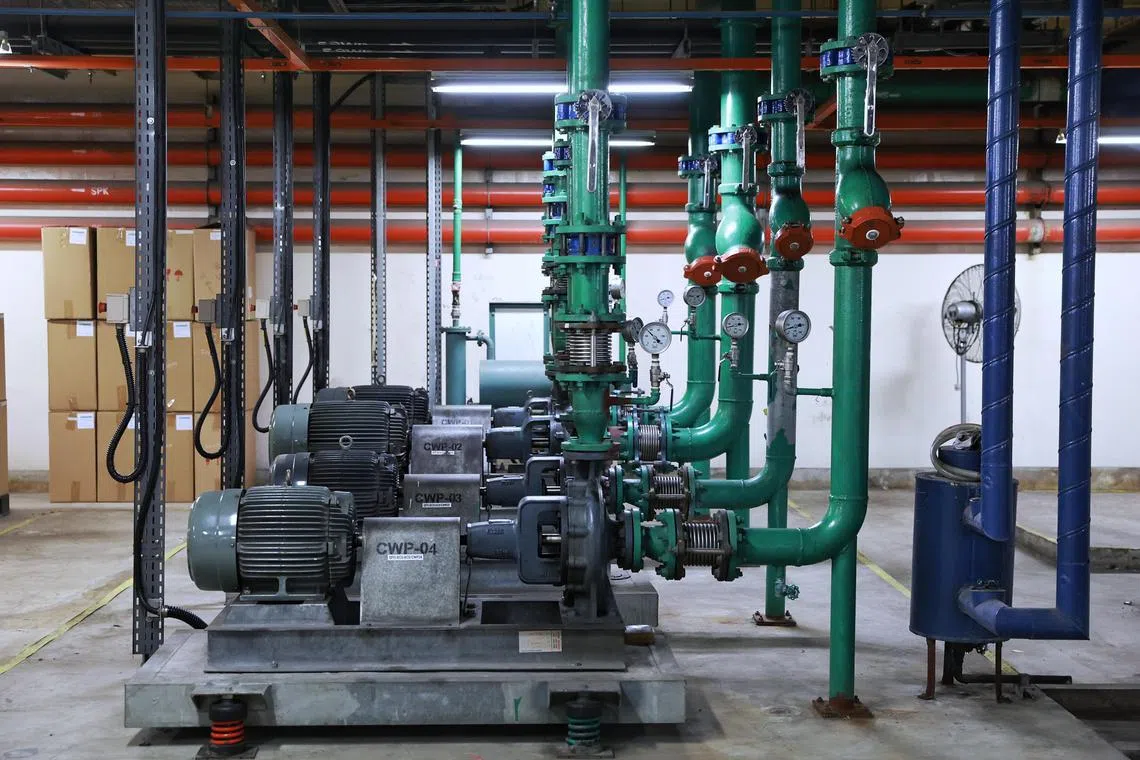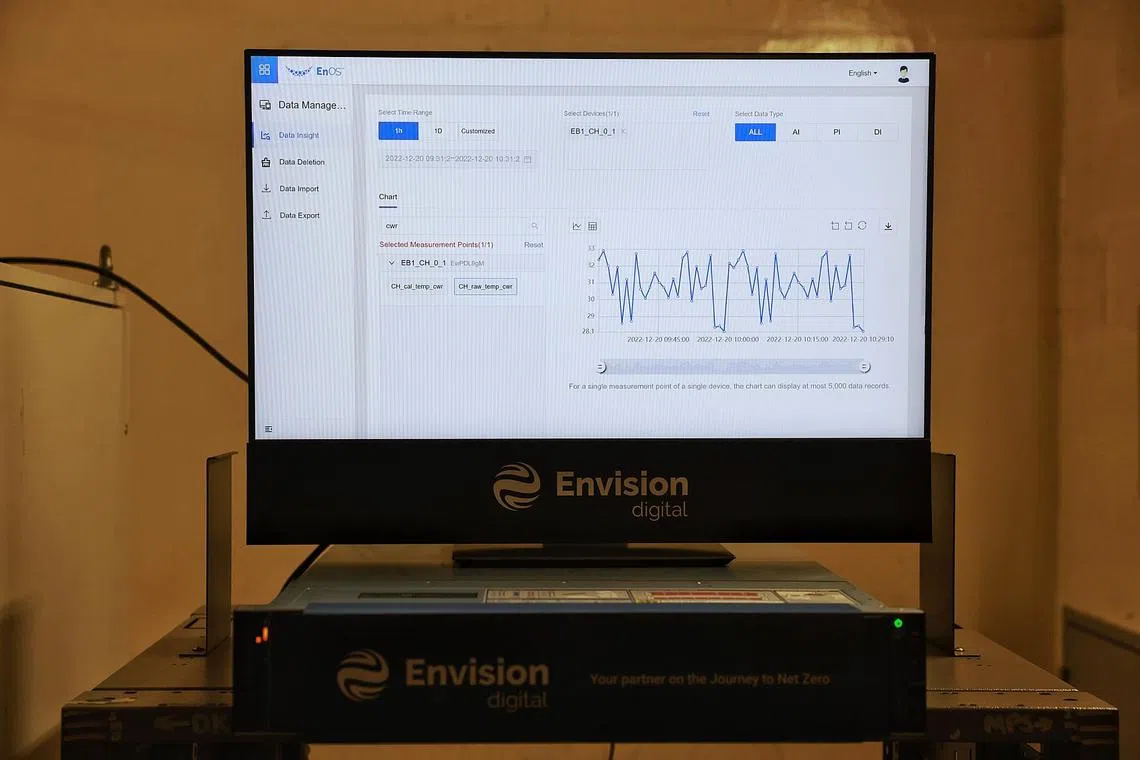Trial using AI to reduce energy usage at MRT stations underway at Paya Lebar and MacPherson
Sign up now: Get ST's newsletters delivered to your inbox

Coolant pipes (green) in the environmental control system plant at Paya Lebar MRT station.
ST PHOTO: KEVIN LIM
Follow topic:
SINGAPORE - A trial using artificial intelligence (AI) to curb energy consumption while keeping temperatures cool is currently under way at two underground MRT stations.
Launched by rail operator SMRT in partnership with decarbonisation software company Envision Digital, the three-month trial started on Dec 15 at the Paya Lebar and MacPherson stations on the Circle Line, with the aim to reduce energy consumption by 5 to 10 per cent at each location.
If successful, SMRT plans to install the AI system in 70 underground stations across the North-South, East-West, Circle and Thomson-East Coast lines by the end of 2023.
This will reduce energy consumption at train stations by over 7,000 megawatt hours (MWh) a year – akin to the annual average energy used by about 1,500 four-room HDB flats.
The AI system uses data like weather conditions and the number of commuters to predict conditions like the amount of heat in a train station for the next hour.
The data will then be used to automatically adjust the air-conditioning system to maintain an optimal temperature of about 26 deg C using the right amount of energy.
This will help reduce the time taken to maintain the temperature and also lower energy consumption by not overproducing the energy required to cool a station.
Mr Lam Sheau Kai, president of SMRT Trains, said at the official event launch on Tuesday that MRT trains are the greenest mode of public commute in Singapore and the rail operator is expanding its green initiatives to lower energy usage.
“These are part of continued efforts by SMRT to find innovative and sustainable ways to reduce our carbon footprint and contribute to a greener Singapore,” said Mr Lam.
The initiative is part of SMRT’s mission to cut its carbon footprint to achieve net zero by 2050.
The use of air-conditioning is responsible for more than half of the energy consumed in underground stations.
Currently, a traditional air-conditioning control system is used to maintain the optimal temperature. The automated system detects the temperature in the station and the process to adjust it to 26 deg C takes time and uses more energy when it overcompensates, as it does from time to time.

The workstation in the environmental control system room showing the charting of temperatures at the Paya Lebar MRT Circle Line station.
ST PHOTO: KEVIN LIM
The use of AI in the air-conditioning system is part of SMRT’s initiative to use smart technologies to improve efficiency in its rail operations.
The company is also testing a digital platform to monitor the cleanliness of toilets.
The system reads data such as the level of ammonia and the number of commuters in a toilet to determine the hygiene service index. When the index threshold is exceeded, an alert will be sent to cleaners.
Launched in June, The Happy Toilet programme is currently on trial at the Paya Lebar and MacPherson stations, and the Paya Lebar and Aljunied stations on the East-West line.


